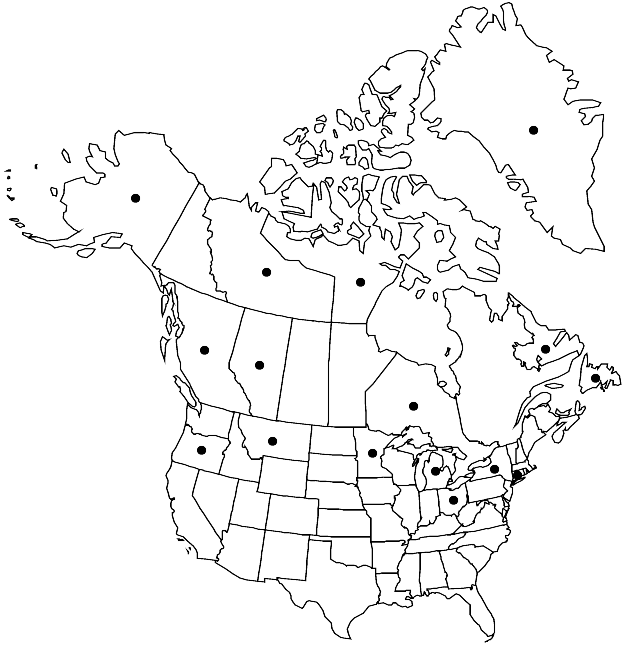Pseudocalliergon trifarium
Hedwigia 46: 311. 1907.
Plants medium-sized, rarely large, slightly turgid, rarely with golden gloss when dry. Stems unbranched or slightly and irregularly branched. Stem-leaves imbricate or sometimes spreading, straight, broadly or very broadly ovate, suddenly narrowed to apex; margins entire; apex broadly rounded, flat; costa single, to 3/5–9/10 leaf length, rarely almost entire leaf length; alar cells long-rectangular, inflated, walls incrassate or strongly so, region transversely triangular or sometimes in one transverse row; distal laminal cells smooth. Perichaetia with inner leaves suddenly narrowed to apex, apex obtuse or acute. Capsule horizontal to inclined.
Habitat: Lime-rich and usually deep fens, single shoots among other species (especially Scorpidium scorpioides), rock with trickling water, spray zones of waterfalls
Elevation: low to high elevations
Distribution

Greenland, Alta., B.C., Nfld. and Labr., N.W.T., Nunavut, Ont., Alaska, Conn., Mich., Minn., Mont., N.Y., Ohio, Oreg., West Indies (Dominican Republic), South America (Colombia), South America (Venezuela), Eurasia
Discussion
Pseudocalliergon trifarium is easily identified by the unbranched or almost unbranched shoots with straight and imbricate or rarely more or less spreading, broadly or very broadly ovate leaves with broadly rounded apices. Shoots of P. trifarium are frequently divided into segments that correspond with growth seasons; in the proximal, spring portion of each segment the leaves are smaller and more strongly imbricate than distally in the same segment. The transition between the differently sized leaves is gradual within each segment, whereas the transition between segments is sudden. Pseudocalliergon trifarium could possibly be confused with Loeskypnum wickesiae (Calliergonaceae), and the characters separating these two species are given with the latter.
Selected References
None.
Lower Taxa
"length" is not a number."narrower" is not a number.